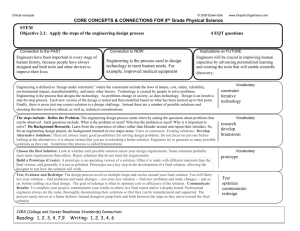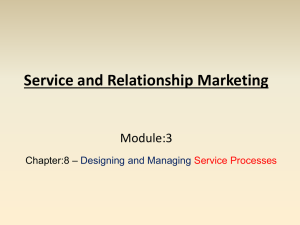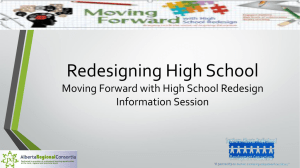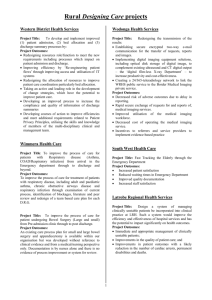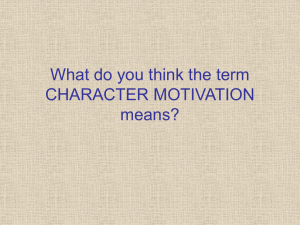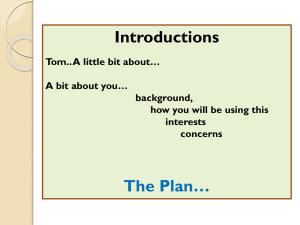Snack Time Catastrophe
advertisement
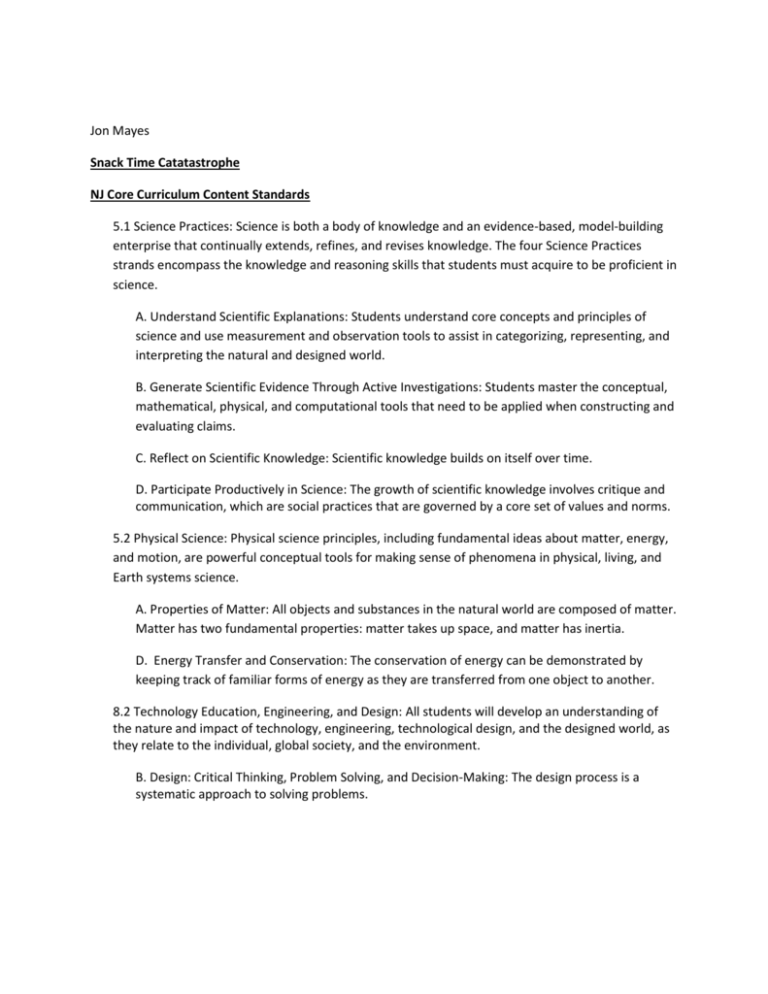
Jon Mayes Snack Time Catatastrophe NJ Core Curriculum Content Standards 5.1 Science Practices: Science is both a body of knowledge and an evidence-based, model-building enterprise that continually extends, refines, and revises knowledge. The four Science Practices strands encompass the knowledge and reasoning skills that students must acquire to be proficient in science. A. Understand Scientific Explanations: Students understand core concepts and principles of science and use measurement and observation tools to assist in categorizing, representing, and interpreting the natural and designed world. B. Generate Scientific Evidence Through Active Investigations: Students master the conceptual, mathematical, physical, and computational tools that need to be applied when constructing and evaluating claims. C. Reflect on Scientific Knowledge: Scientific knowledge builds on itself over time. D. Participate Productively in Science: The growth of scientific knowledge involves critique and communication, which are social practices that are governed by a core set of values and norms. 5.2 Physical Science: Physical science principles, including fundamental ideas about matter, energy, and motion, are powerful conceptual tools for making sense of phenomena in physical, living, and Earth systems science. A. Properties of Matter: All objects and substances in the natural world are composed of matter. Matter has two fundamental properties: matter takes up space, and matter has inertia. D. Energy Transfer and Conservation: The conservation of energy can be demonstrated by keeping track of familiar forms of energy as they are transferred from one object to another. 8.2 Technology Education, Engineering, and Design: All students will develop an understanding of the nature and impact of technology, engineering, technological design, and the designed world, as they relate to the individual, global society, and the environment. B. Design: Critical Thinking, Problem Solving, and Decision-Making: The design process is a systematic approach to solving problems. Equipment 10 pieces of saltine crackers plus a few extra for testing and design [per group], a few tablespoons of peanut butter [per group], a plate [per group] water, a leafblower, a propane torch, a watering can What Students Should Know Before The Lesson Before the lesson, students should know about forces and that balanced forces result in zero acceleration. They should have at least some idea of who engineers are and what they do. They should understand the engineering process at least to the degree of knowing engineers must create a design, implement the design, test the design, evaluate the design, and then redesign as necessary. They must also understand the scientific process to the extent that it relates to the engineering design process in that engineering projects can be treated as application experiments and testing experiments must be used to test various parts of the design. Lesson Objectives, Goals, Important Ideas, and How I Will Assess Them The objective of this lesson is for students to work collaboratively to design a structure out of fluff, saltines, and water which will withstand a test of the elements. The procedural goal achieved in doing this is a review, reinforcement, and application of the engineering process. They need to design a method and process for creating this system of delivery, implement the design, test the design, evaluate faults and redesign improvements, implement the improvements, then test their new design. They must understand the forms of design associated with this project and the types of engineers who would work on such a project. They will also practice their use of force diagrams and structural geometry in the design of their structure. They will also practice their skill in using the scientific method and the engineering design process. They must meta-cognitively reflect on how the science and engineering aspects of such a project are intertwined. They will analyze how the scientific method and the engineering design process related, and how they work together to achieve this desired goal. They will look at what steps they followed in the creation of their structure, what roles all of these steps played in the process, and why they were important. Epistemologically, students should be able to reason how and why certain types of engineers are chosen for such a project, and how the engineers work together to complete the project. Students should discuss the social impact and importance of engineers and their work on societal values and solutions to societal problems. I will formatively assess them by making rounds in the room and asking them questions which will guide and broaden their thought processes during the activity. Also, I will read and make comments on their reports so they can read my comments, reflect on them, and revise the report for resubmission. Potential Student Difficulties Students may have trouble with completing all aspects of the engineering design process to design and create a structure which will fulfill all of the protective functions required. They may not follow a reasonable utility in their design and /or may not create a design with the necessary functions in mind. They may not go through the whole design process in the creation of their structure, and may not adequately test parts of their design before implementation. Students also may not properly utilize force diagrams and their knowledge of forces in their design. To help them with this, I will facilitate their cooperation and recollection of how they can design their structure to fulfill all requirements by continuously monitoring and asking pointed questions. Also, I will scaffold them in their implementation of the engineering design process in a similar way. The Lesson Design: Snacktime Catastrophe Equipment: 10 pieces of saltine crackers plus a few extra for testing and design, a few tablespoons of peanut butter, water Experiment: Design and build a structure which will survive earth, fire, wind, and water. After you have designed and built you initial structures we will test them. The tests will be chosen at random, and you will have 5 minutes before the trial to implement the design modifications specific to the trial. For the fire trial, a blowtorch will be held to your structure for ten seconds. For the earth trial, your structure will be dropped from a height of three feet. For the water trial, your structure will be exposed to a torrent from the watering can for ten seconds. Lastly, the air trial will be a gale force storm wind from the leaf blower from a distance of three feet away for a duration of ten seconds. Time Activity What students are doing What I am doing Before Prep and sit bell down. Reading and mentally preparing Greeting and finishing set up for equipment. for the activity. 0-5 min Activity Intro Listening Explaining and introducing the activity 5-30 min Design and build Design, build, and test the marble delivery system Walking around monitoring the students, helping them, and keeping them motivated. 30 min Draw the first trial 30-35 min Evaluate and redesign Evaluating how to improve their Walking around monitoring the students, design, redesigning, improving, helping them, and keeping them motivated. and testing 35-40 min Test Watching as their designs are tested Testing their design and repeating as necessary 40-45 min Evaluate, redesign, and retest Evaluating how to improve their Walking around monitoring the students, design, redesigning, improving, helping them, and keeping them motivated. and testing Then, I will retest their designs 45 min Draw the second trial 45-50 min Evaluate and redesign Evaluating how to improve their Walking around monitoring the students, design, redesigning, improving, helping them, and keeping them motivated. and testing 50-55 min Test Watching as their designs are tested 55-60 min Evaluate, redesign, and retest Evaluating how to improve their Walking around monitoring the students, design, redesigning, improving, helping them, and keeping them motivated. and testing Then, I will retest their designs Testing their design and repeating as necessary 60 min Draw third trial 60-65 min Evaluate and redesign Evaluating how to improve their Walking around monitoring the students, design, redesigning, improving, helping them, and keeping them motivated. and testing 65-70 min Test Watching as their designs are tested 70-75 min Evaluate, redesign, and retest Evaluating how to improve their Walking around monitoring the students, design, redesigning, improving, helping them, and keeping them motivated. and testing Then, I will retest their designs Testing their design and repeating as necessary 75 min Fourth trial 75-80 min Evaluate and redesign Evaluating how to improve their Walking around monitoring the students, design, redesigning, improving, helping them, and keeping them motivated. and testing 80-85 min Test Watching as their designs are tested 85-90 min Evaluate, redesign, and Evaluating how to improve their Walking around monitoring the students, design, redesigning, improving, helping them, and keeping them motivated. Testing their design and repeating as necessary retest and testing Then, I will retest their designs Homework: Create a formal lab report for this experiment. Include the full scientific method for this type of experiment. Also, include a description of the reason why you chose a given design for your bridge. Why did you choose certain shapes and structures and how are they superior for supporting weight. Lastly, discuss the similarities and differences of the engineering design process and the scientific method, and how did you use both in your design. What kinds of engineers are required for a project such as this? What kind of social responsibility are these engineers burdened with and how will their work impact society? Modifications for Different Learners This activity incorporates creating, design, building, measuring, analyzing, applying, and performing so it has a desirable aspect for most types of learners.
